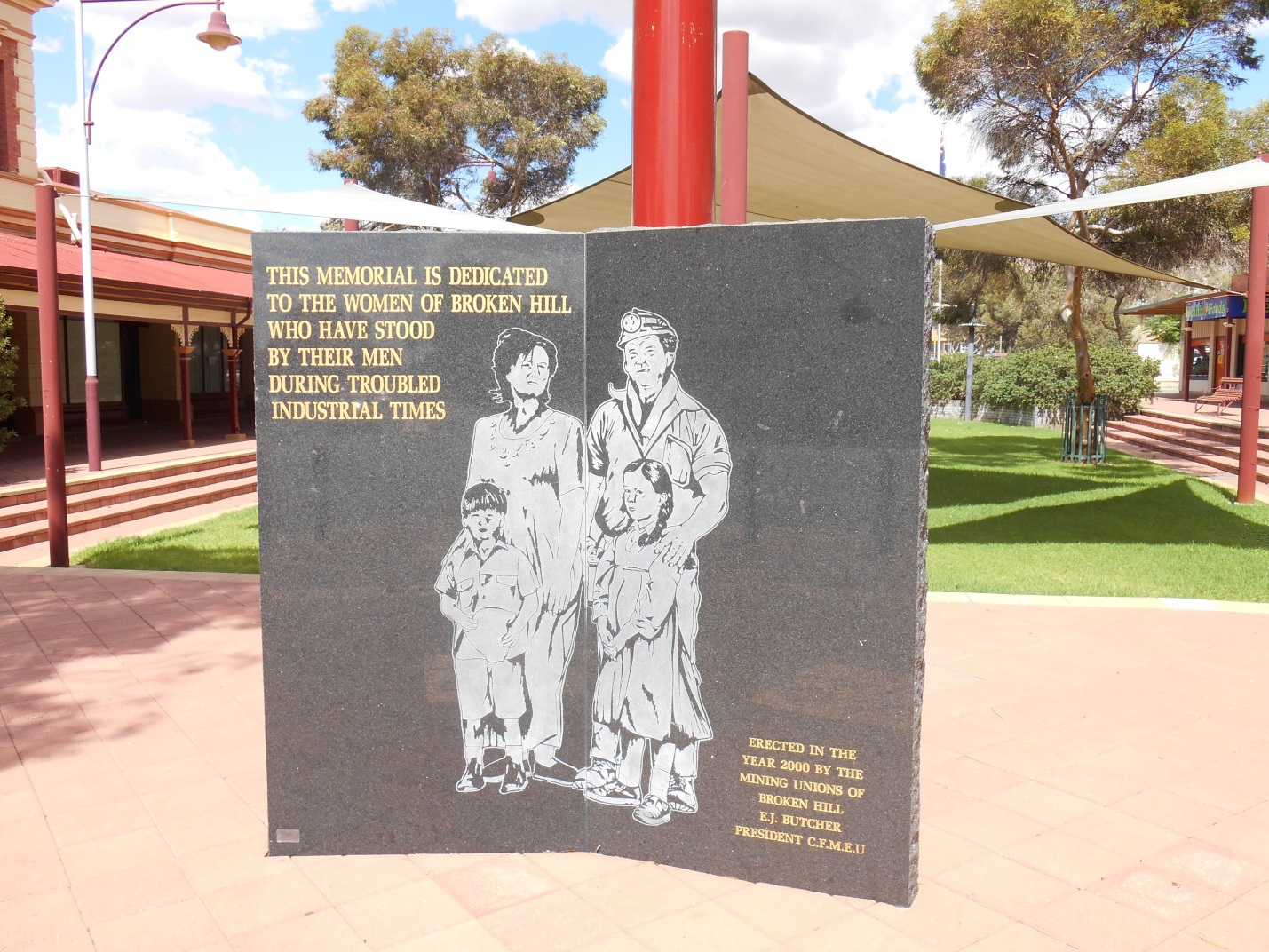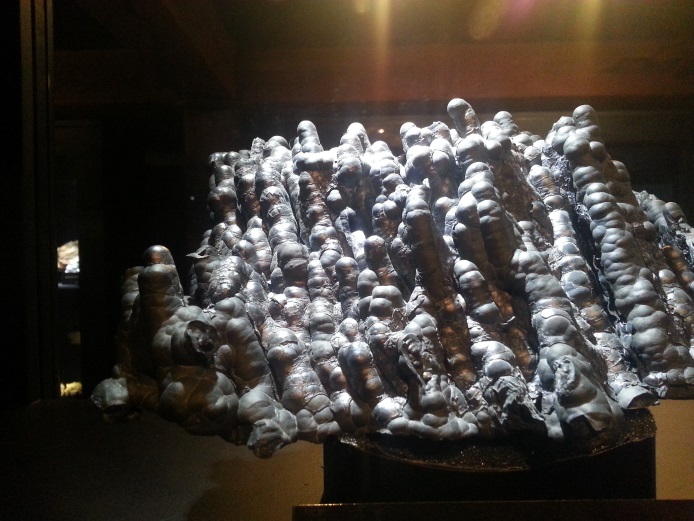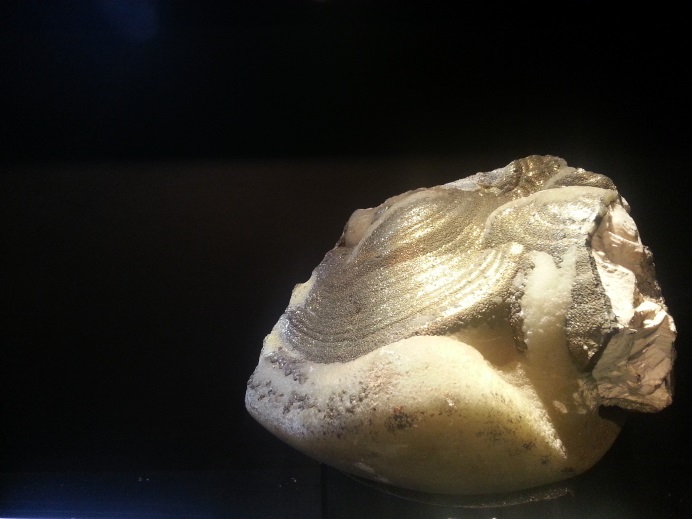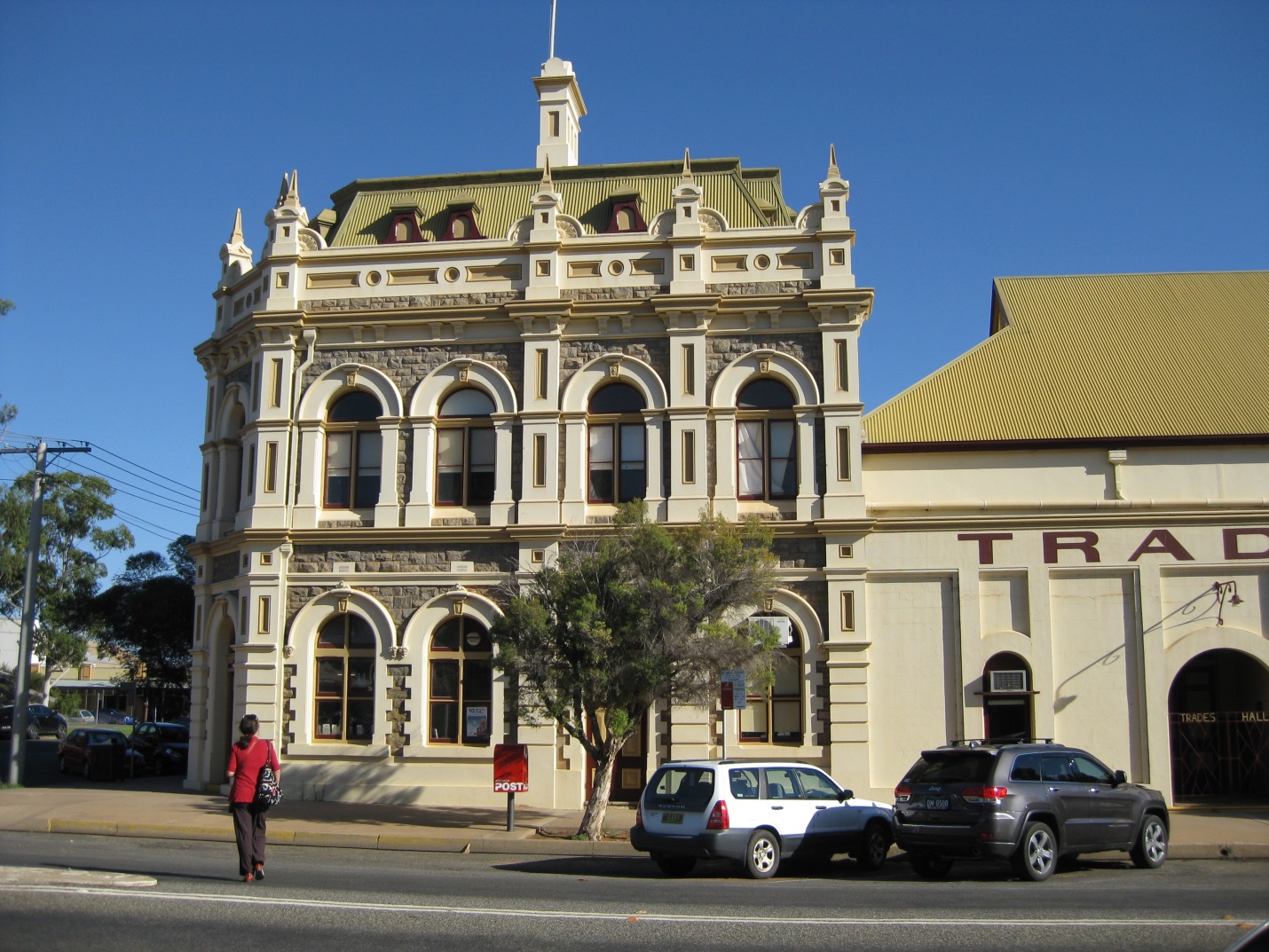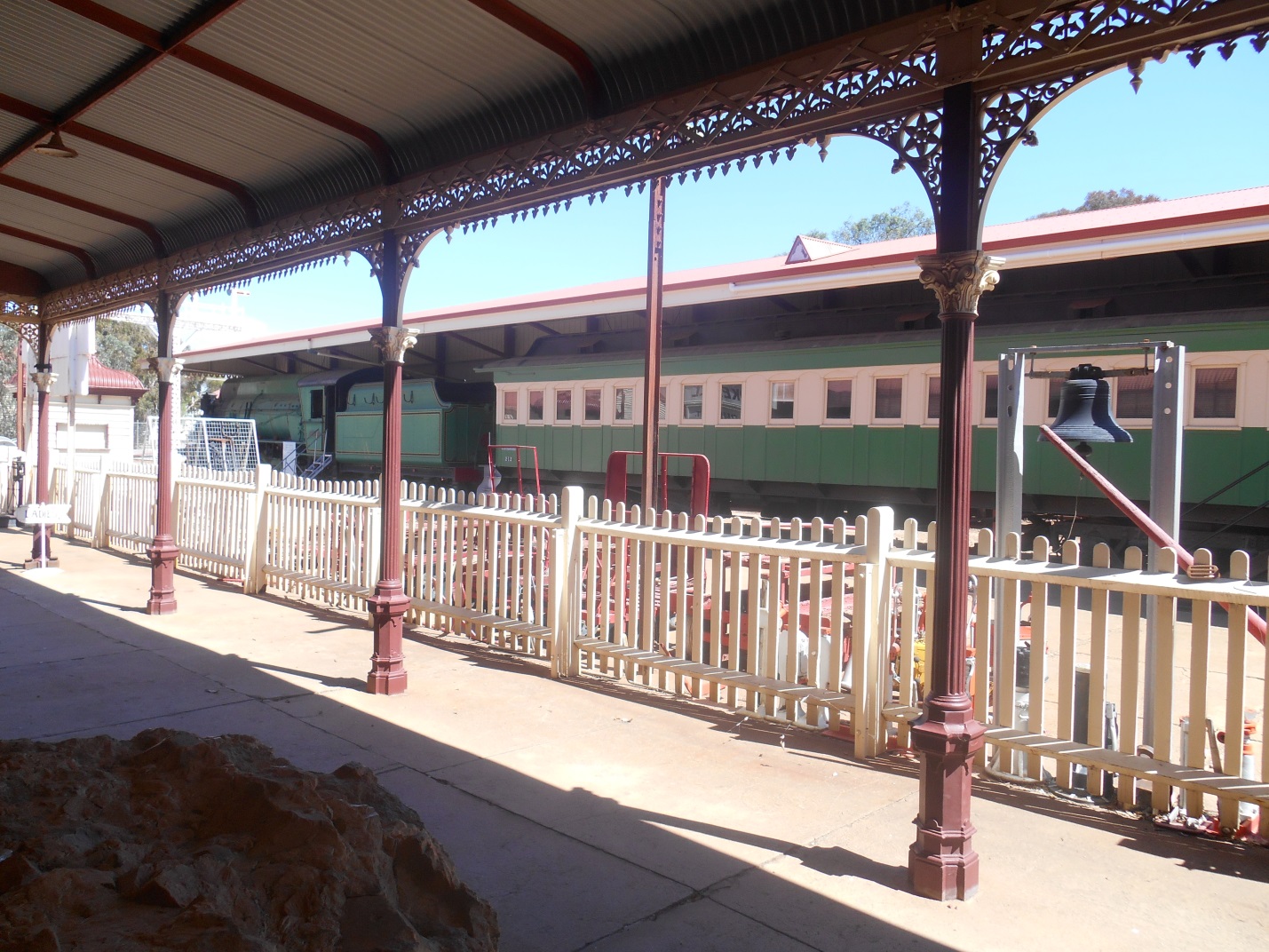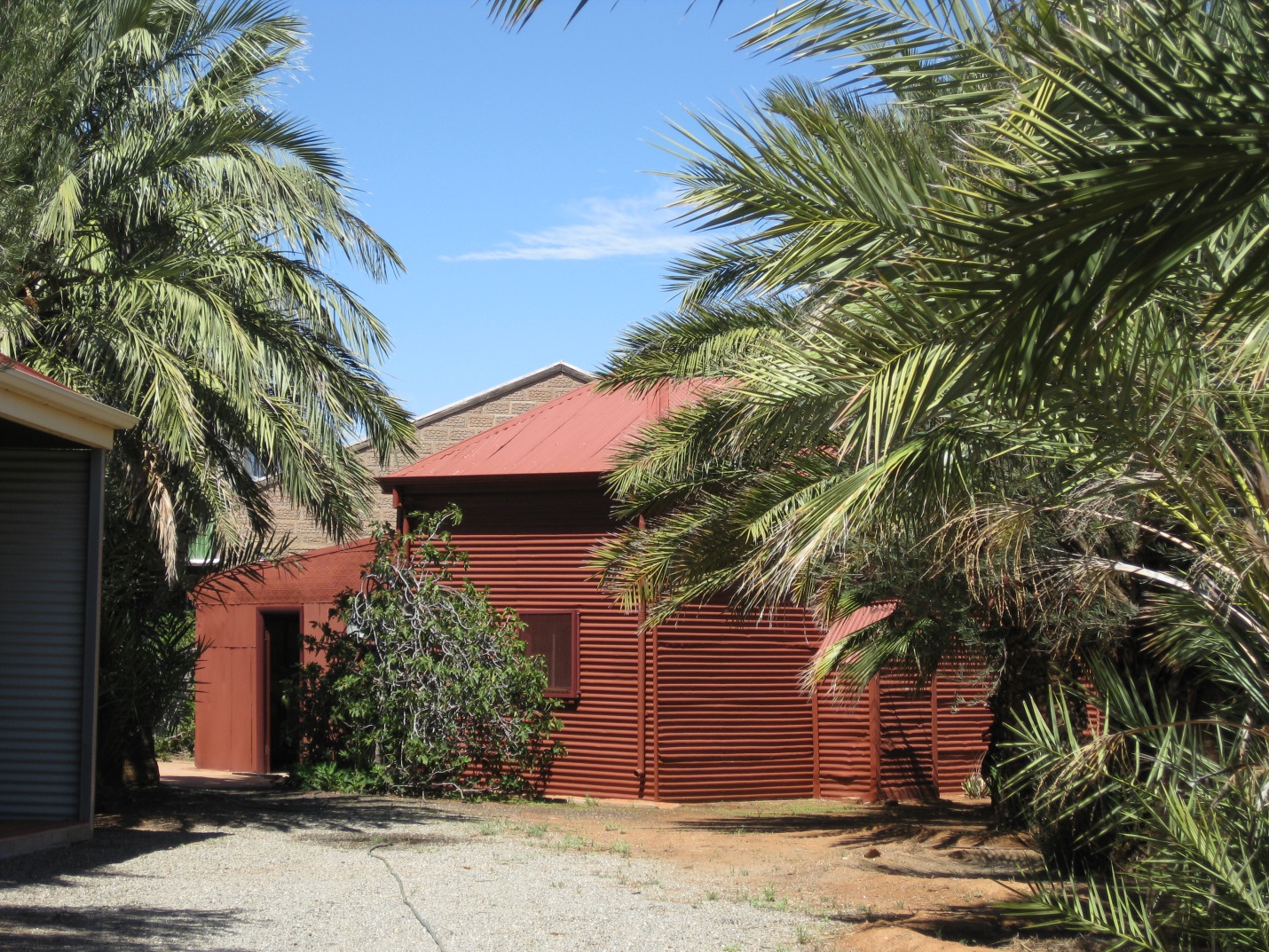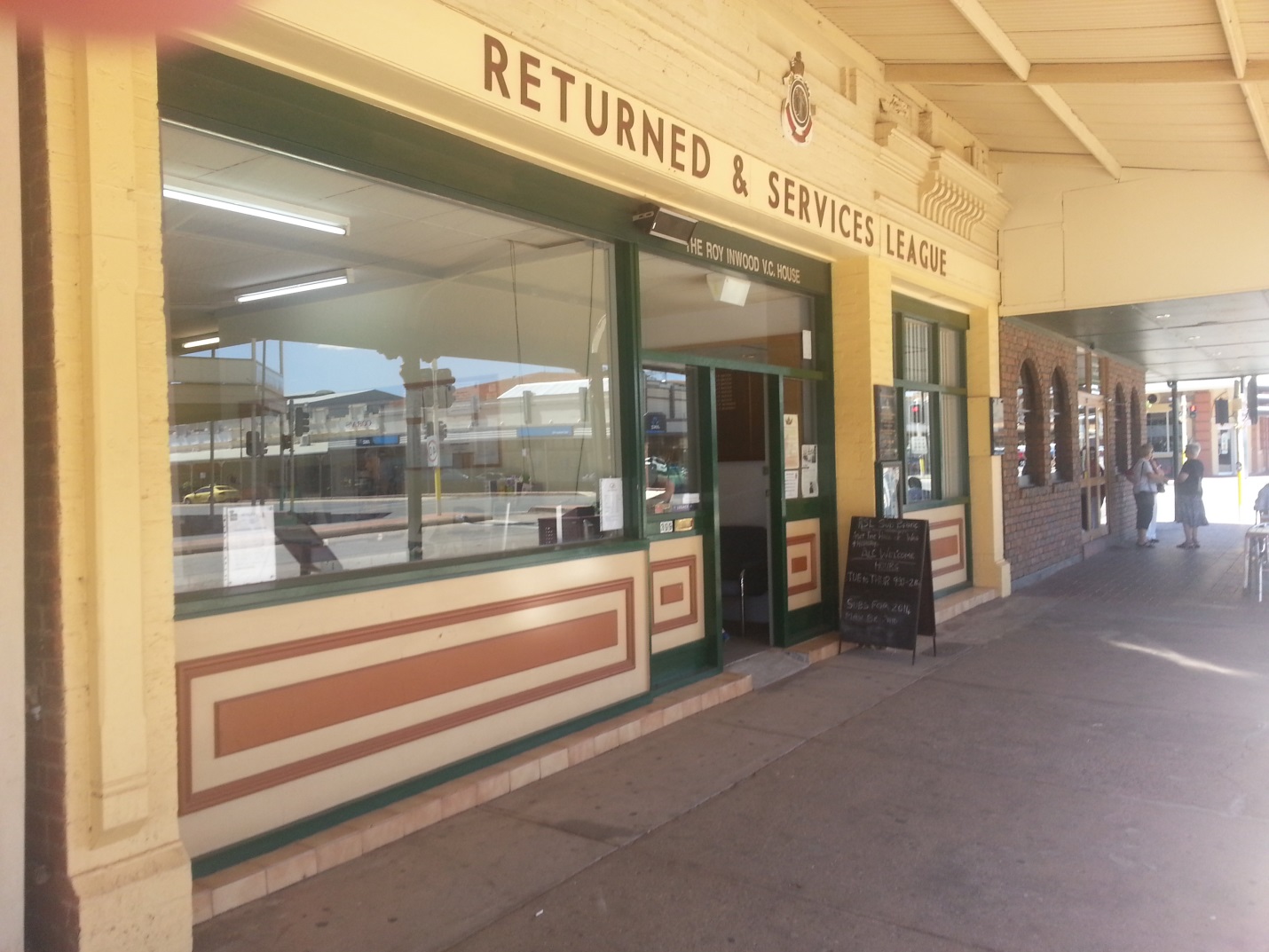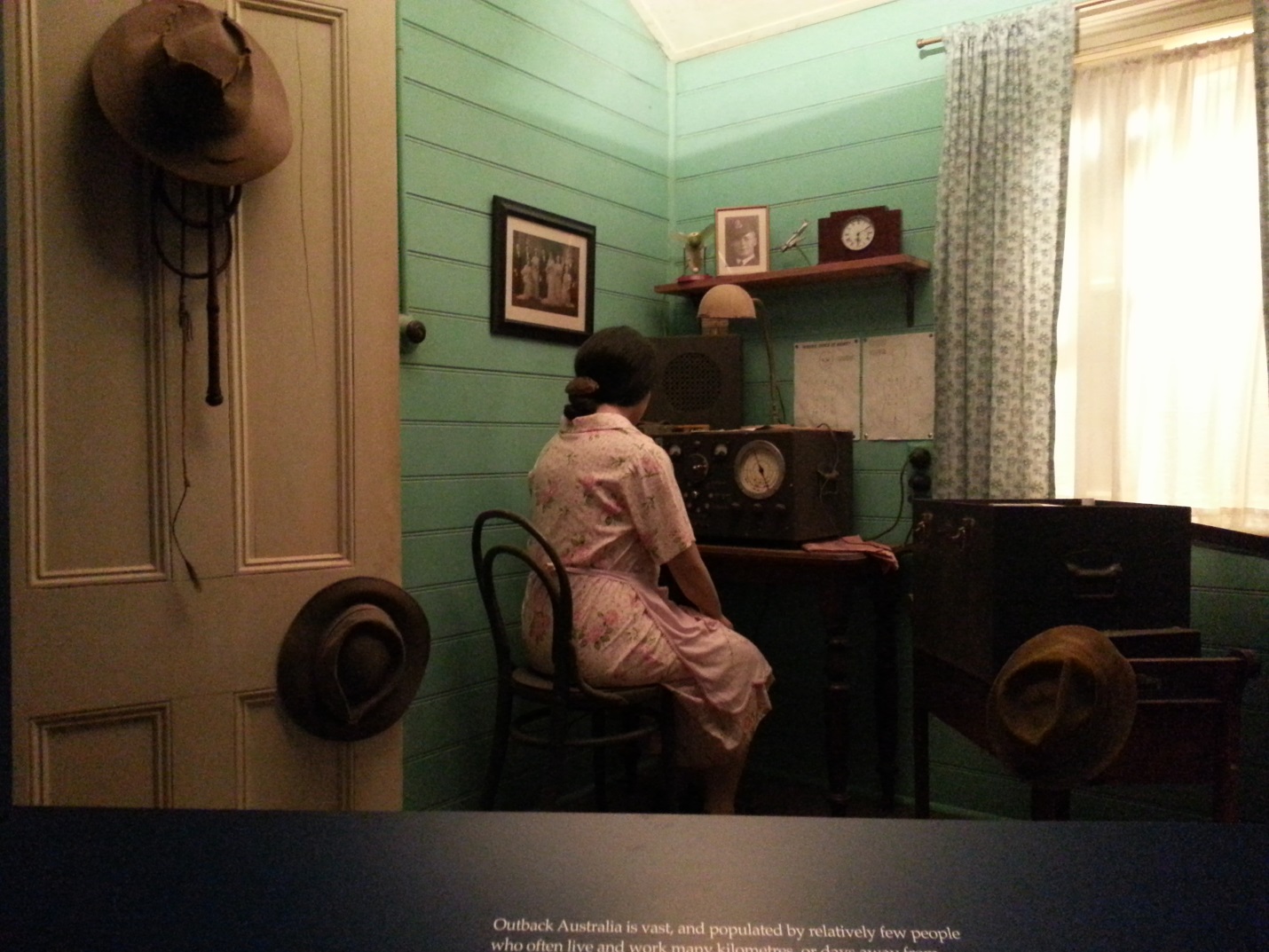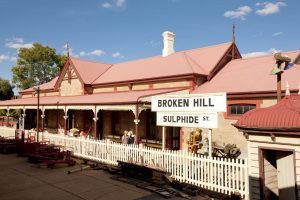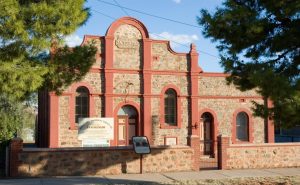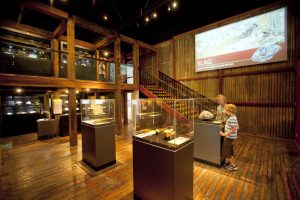We’re so lucky to have opportunities to visit museums around NSW. Last week, we visited Broken Hill and discovered fascinating stories of colourful characters and local history.
The town is named after the jagged rocky ridge that rose above the undulating country known by early pastoralist as “the broken hill”. As romantic as that sounds the town’s horizons are in fact dominated by the gigantic “mullock hill”, a seven kilometre plateau of tailings and waste rock from the mines. This dominates the city. It can be seen from almost everywhere and powerfully defines the atmosphere of the town.
Located on top of this “hill” is the popular tourist destination, the Miners’ Memorial which stands out starkly against the skyline – a poignant reminder of lives lost and hard times endured.
Not surprisingly, references to mining history and minerals dominate the story of Broken Hill. Many of the street names around the town centre are named after rocks and minerals, e.g. Argent Street, Cobalt Street, Crystal Street and Beryl Street (and yes, Beryl really is a mineral!). Broken Hill’s lead-silver-zinc ore deposit carries the mantle of being the largest ever discovered and is the birthplace of the BHP (Broken Hill Propriety) company.
So it was apt then that the first museum we visited was the Albert Kersten Mining and Mineral Museum, located on the corner of Crystal and Bromide Streets. It’s open 7 days per week.
Also known as the GeoCentre, or the Broken Hill Mining & Minerals Museums, the museum is home to the iconic Silver Tree, a spectacular ornament made from 8.5 kilograms of silver. Photography of the tree isn’t permitted although images are prominently displayed on the museum’s website.
Start your visit with the introductory video to the geological history of Broken Hill in the theatrette. Apparently children love this museum and are especially drawn to the marvellous display of minerals which even tempts those without interest in geology or knowledge of minerals, ore or rocks. You can see some of our favourites in the slideshow above.
A few blocks away on the corner of Blende and Sulphide Streets is Trades Hall. Landmark building, constructed in 1905 and home to the Broken Hill union movement, the museum documents the history of the union strikes of 1892, 1909 and 1919. This is local history at its best, with clear links made between these events–the 35 hour week, groundswell political action, improved working conditions–and our current day work environments. The building is open to the public and both the architecture and the stories displayed make it well worth a visit.
Next stop. The Sulphide Street Railway and Historical Museum–a museum with something for everybody. Open 7 days, it houses the Silverton Tramway Company locomotives & memorabilia in the original 1905 station building and grounds. The Broken Hill Migrant Heritage Museum, Hospital Museum, Ron Carter Transport Pavilion and the Tess Alfonsi Mineral Collection are also located onsite.
This is local history at its best, with clear links made between these events–the 35 hour week, groundswell political action, improved working conditions–and our current day work environments.
The Broken Hill Migrant Heritage Museum was our immediate favourite and is particularly impressive, telling the stories of the lives of people from non-English speaking backgrounds that made Broken Hill their home since 1883. It focuses on the reasons they came, their remarkable journeys and the initial impressions of this alien home.
If you are interested in migration stories you’ll love the Synagogue of the Outback Museum, located at 165 Wolfram Street in Broken Hill. It’s open every Monday, Wednesday & Sunday from 10am to 3pm and tells the history of the Jewish community in Broken Hill from the 1880s to the 1960s.
Back that up with a visit to the Afghan Mosque and you’ll start to get a picture of the people who made Broken Hill the place it is today. The mosque presents a completely unique experience. It’s said to be the first mosque built in NSW and the only surviving mosque built by cameleers in Australia. Ring to make an appointment for a tour of the mosque, and if you’re lucky enough to score local resident Bobby Shamroze as your tour guide, you’ll be entertained with colourful stories of the old camel camp that surrounded the mosque.
The RSL Hall of Fame Museum is located on Argent Street, almost opposite the Regional Art Gallery. It is open Monday, Wednesday and Friday 9.30am – 12pm and Tuesday and Thursday 9.30am – 3pm.
One of the standouts of the feast of museums in this rocky town is the story of the Royal Flying Doctor Service, featured at the Bruce Langford Visitors Centre. Open 7 days a week, it combines a museum, theatre and shops. The professional and interactive displays show the history of the Service, and feature tributes to the doctors, pilots and flight nurses who provide such an important and valued service to the many community groups.
Broken Hill presents an amazing experience; the geography, the landscape and the riches brought forth from it are a perfect companion to the vigour and tenacity of the local people and their stories.
And be sure – while it’s ‘a flying visit’ to get there, you’ll need a week to see this and more in the region!


